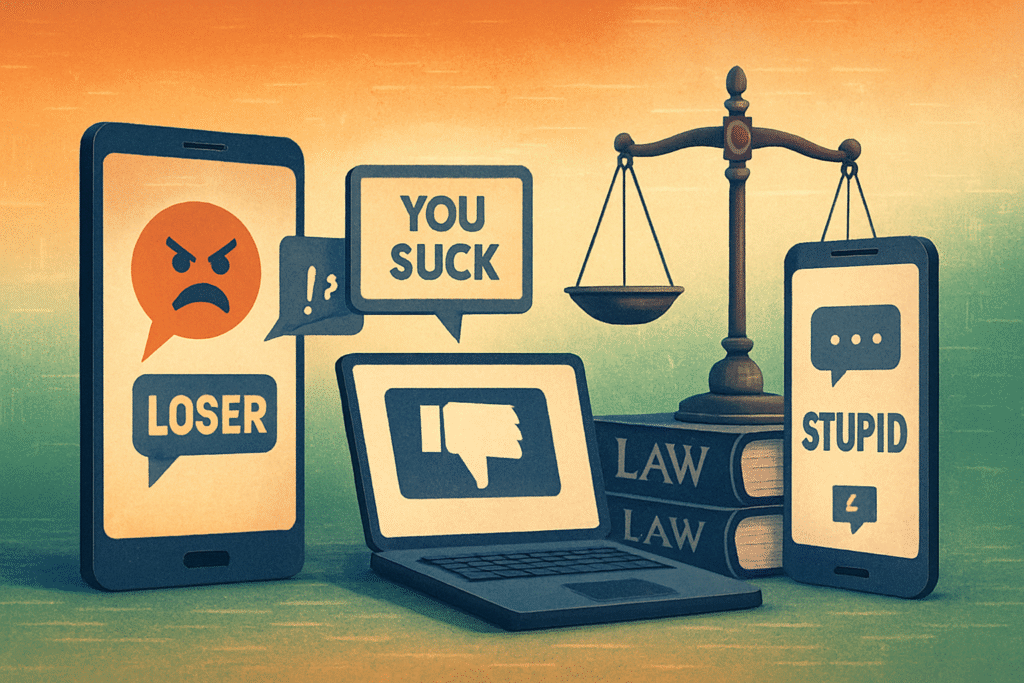Published On: 17th April, 2024

An understanding of the Medico-Legal industry in India
Have you heard about that one time when a surgeon accidentally left a pair of scissors in a woman’s abdomen which consequently became the cause of her death? Sounds incredibly painful to the woman and negligent on the part of the surgeon, right? What could be the possible consequences of such an incident? What would be the heavy legal implications that follow? Well to answer these questions, we will have to delve into the complex and layered Medico-Legal Industry of India.
India is home to 1.42 billion people and there are about 70,000 hospitals in the country. These hospitals cater to the masses every single day. The medical industry consists of doctors and other medical professionals for sure, however, thtients are a very important part of this industry. The intersection of this industry with the law and legal professionals is known as the Medico-Legal Industry, which is a web of intricacies. This article aims to understand the industry and its status in India, in a simpler way.
Introduction –
The Medico-Legal Industry briefly includes doctors, medical professionals, hospitals, the law, lawyers, legal experts, and a wide range of procedures, protocols, mechanisms, guidelines, etc. A Medical professional is bound by legal and ethical obligations in his day-to-day practice. These obligations protect the rights of medical professionals as well as patients. The industry guidelines help in constantly improving healthcare facilities, and service quality and preventing the occurrence of negligent activities. A well-functioning medico-legal system embodies transparency and clarity which ultimately creates awareness amongst the general public and at the same time guides medical institutions and prevents them from malpractice.
The medico-legal scenario in India is a complex blend of patient rights, ethical medical practice, and a functioning legal system to back it all up.
The key components of the medico-legal system are medical-legal cases, medical-legal reports, the Consumer Protection Act, Consent, Confidentiality, legal duties of medical professionals, patient’s rights, regulatory bodies, and disciplinary actions.
Medico-legal cases –
A Medico-Legal case (MLC) can be simply defined as a medical case with legal implications. The National Health Systems Resource Centre (NHSRC), India defines medico-legal cases as, “any case of injury or ailment where the attending doctor after history taking and clinical examination considers that investigations by law enforcement agencies and other superior authorities are warranted to ascertain circumstances and fix responsibility regarding the said injury or ailment according to the law”. The decision to label a case as MLC should be based on the sound professional judgment of the person in charge of attending to the case with a thorough clinical examination. Some of the common situations which qualify as MLCs involve cases of –
- Injuries and burns with suspicion of foul play
- Death by homicide or suicide
- Sexual assault
- Suspected poisoning or intoxication
- Unexplained deaths
- Injuries or death by motor accidents
- Medical negligence
Autopsies and Forensic analysis in cases of death help to determine the cause of death and figure out if anything suspicious has occurred that led to death. Careful examination of victims in cases of sexual assault is necessary to gather evidence for legal prosecution. Injuries and burns can often be a result of domestic violence against the victim. Hence, medical professionals must report the details of every such case to law enforcement agencies.
Medio-legal reports –
Medico-legal reports are important documents prepared by authorized medical practitioners i.e. professionals registered with the Medical Council of India. In certain complex and specific cases, only forensic specialists like pathologists may prepare such a report. These reports are usually prepared for MLCs on police requests or the magistrate’s orders.
They contain basic information about the patient and a detailed account of the clinical examination conducted by the medical professional. The report mentions all the findings of such an examination and other investigation results like X-rays, blood tests, toxicology reports, etc. The professional opinion and conclusion based on the findings are also briefly mentioned. In cases where death has occurred, the cause of death based on the autopsy is also determined by the report.
Medico-legal reports are the most crucial evidence in court cases relating to suspicious injuries, poisoning, sexual offenses, and unexplained deaths. They also form a strong basis for investigation, as the details provided in such a report help the police to get leads and establish circumstantial evidence. The medical practitioner who prepares this report is expected to maintain confidentiality and restrict access only to authorized persons and also make accurate and unbiased judgments at the same time. The report must be prepared promptly to avoid delays in investigations.
The Consumer Protection Act and Patient Rights-
The Consumer Protection Act, of 2019 mentions that medical services are ‘contracts for personal service’ when rendered in exchange for a fee. This makes the patient a consumer who receives treatment and diagnosis from the doctor. The patients have the following rights-
- Right to information– Every patient has the right to adequate relevant information about the nature, cause of illness, diagnosis, proposed investigations, management and possible complications to be explained at their level of understanding in a language known to them.
- The patient or their caregiver has the right to information regarding the expected cost of treatment and any additional cost that may be incurred due to other circumstances.
- The patient and their caregiver also have the right to know the identity and professional status of the medical professional, providing the service to them.
- Right to record and reports – Every patient or his caregiver has the right to access original copies of case papers, patient records, investigation reports, and other appropriate documents.
- Right to informed consent – Every patient has the right to grant or not to grant consent to any potentially dangerous, invasive treatment or surgery, which involves certain risks.
- Right to confidentiality, human dignity, and privacy – All patients have the right to privacy and confidentiality wherein their health condition and relevant information must be secured and not exposed or leaked. All patients also reserve the right to human dignity as in the case of female patients, they have the right to the presence of another female person during their physical examination by a male practitioner.
- Right to a second opinion– Every patient has the right to seek a second opinion from another medical professional of the patient’s choice. This must not stop the existing medical professional assigned to them from providing further treatment and necessary information.
Patients can seek legal action if these rights are violated. These rights are crucial for developing confidence and trust amongst the patients and fostering open communication between patients and medical professionals hence transparency plays a huge role in this industry.
One must note that only when a medical service is provided free of cost, it does not come under contracts for personal service.
Legal and ethical duties of medical practitioners and institutions-
Medical practitioners and medical institutions are obliged to follow and abide by the duties and guidelines necessary to protect the best interests of their patients and support the legal back end of the medical industry. A few of these duties are –
- The primary ethical duty of a medical professional is to act in the best interest of the patient by providing high-quality care, respecting the patient’s identity, and avoiding any harm.
- The medical practitioner has a duty to ensure that all the adequate and relevant information is provided to the patient in simple language and communicated either personally or by his qualified assistants.
- The hospital management must inform the patient and their respective caretakers regarding the cost of treatment and other necessary charges with proper reasoning in writing with an itemized bill.
- The hospital management has a duty to provide all the necessary medical reports and records to the patient without fail.
- All the hospitals, both government and private sector, are duty-bound to provide basic emergency medical care to injured persons without demanding payment or advance. Such basic care must be provided irrespective of the paying capacity of the patient. This was decided by the Supreme Court in the famous judgment of Parmanand Katara vs Union of India,1989.[1]
- The hospital management must ensure that all the concerned doctors are properly instructed to seek informed consent using appropriate policies and consent forms with protocol from the patient.
- A medical professional is duty-bound to inform the patient and his caregivers about the risks involved in certain procedures and only proceed if the patient has given consent in writing or informed consent. In the case of Smt. K Shyamala Murthy vs Dr. Manoj Khanna[2], a patient developed complications after undergoing liposuction surgery without being fully informed about the risks involved the court ruled in the favour of the patient, highlighting the doctor’s obligation to provide clear and complete information before obtaining consent.
- Medical practitioners have to hold the information about health conditions, treatment plans, and other necessary details in strict confidentiality and must only communicate such information to the patient or authorized persons of law.
Cases of Medical Negligence-
Medical negligence is a serious problem that occurs and has occurred on a large scale in India leading to death and irrevocable injuries to a lot of people. Negligence is simply the breach of duty or care, resulting in injury or damage. Medical negligence amounts to negligence on the part of medical professionals and medical institutions. Some common types of medical negligence are –
- Surgical Errors– Operating on the wrong body parts, performing unnecessary surgeries, leaving instruments inside a patient’s body or not following adequate hygiene during surgery, which could lead to infections all amount to surgical errors.
- Misdiagnosis or delayed diagnosis– When a medical practitioner fails to identify a condition or delays diagnosis, which leads to worsening conditions for the patient and limited treatment options.
- Medication errors-prescribing the wrong medicines, prescribing inappropriate dosage, administering medication incorrectly, or prescribing and administering medicine without thoroughly viewing the medical history of a patient for allergic symptoms.
- Hospital negligence– Hospitals are held liable for negligence when infections, injuries, and other harm are caused to the patient due to unqualified staff, inadequate staff, unhygienic conditions, malfunctioning equipment and not following protocol.
Medical negligence is a legally cognizable offense. Patients can initiate legal proceedings against the medical practitioner responsible for the medical negligence. The Act of medical negligence can invite criminal liability under section 304A of the IPC which deals with the death of a person by any rash or negligent act Similarly, other provisions of the IPC, such as section 337 (causing hurt) and section 338 (causing grievous hurt) are often deployed in medical negligence cases.
Civil liability i.e. monetary compensation can also be a remedy to medical negligence under general law. Another consequence of medical negligence could be in the form of imposition of penalties on the accused.
Another important aspect of medical negligence cases is the fact that patients are considered consumers. Thus, they can approach consumer dispute redressal forums and the consumer courts for the violation of their rights and seek necessary compensation for the same.
The Indian Medical Council regulations 2002 –
The Indian Medical Council (Professional Conduct, Etiquette, and Ethics) Regulations, 2002 aimed to establish ethical guidelines for medical practitioners in India. These regulations focused primarily on ethics expected from registered medical practitioners. These also aimed to improve patient care by ensuring that doctors adhered to ethical standards and always prioritized the patient’s well-being. All the duties and obligations of medical practitioners and medical institutions, as mentioned above are a part of these. The Medical Council of India(MCI) was dissolved in 2020 and replaced by the National Medical Commission. Thus, these specific regulations of 2002 are not directly referenced anymore. However, these became the foundation of ethical medical practice in India which still is relevant in current healthcare.
Challenges faced by the medico-legal industry –
The medico-legal industry faces several challenges, some of them are –
- A lack of qualified forensic and medical specialists, leads to delaying an investigation and analysis of evidence.
- Inadequate training for healthcare professionals leads to misunderstandings and difficulties in navigating the legal system.
- Poor infrastructure and inefficient facilities in hospitals and laboratories
- There is very limited access to advanced technology and major hospitals also operate on outdated technology systems, which leads to inaccuracy sometimes.
- Medical negligence lawsuits can take years to be resorted, causing immense emotional and financial strain on the victims. Such legal proceedings can be expensive, which discourages certain patients from pursuing compensation. Also, it is seen in many cases that the compensation awarded does not reflect the true cost of damage.
- The burden of proof in medical negligence case falls on the patient which can be challenging for the patient to prove due to lack of resources or other complex medical issues.
- Since India is heavily populated a large chunk of patients are unaware of their medical legal rights.
- The theory of defensive medicine, wherein a threat of a lawsuit can lead to a doctor practicing defensive medicine i.e. ordering unnecessary tests to avoid potential accusations, which ultimately leads to an increased health care cost.
Conclusion –
The medico-legal scenario in India is still evolving. It faces a wide range of challenges that hinder the aim of ensuring patient safety and practicing ethical guidelines at the same time. A more streamlined, efficient, and accessible system would benefit both patients as well as medical professionals ultimately, creating a safe medical environment for all in the country. Raising awareness about medico-legal rights and investing in health infrastructure can improve the current scenario. The draft code on medical malpractice and the Consumer Protection Act, both hold the promise of faster and fair justice.
References
- Medico-Legal – Medical Jurisprudence, Clinical Trials, Foreign Drugs, Organ Transplantation, https://www.legalserviceindia.com/medicolegal/medico.htm#google_vignette
(last visited Mar 9, 2024).
- The Legal Procedures and Medico-Legal System in India, https://www.hilarispublisher.com/open-access/the-legal-procedures-and-medico-legal-system-in-india-96828.html#:~:text=The%20patient%20has%20a%20legal,obtained%20should%20be%20legally%20valid(last visited Mar 9, 2024).
- Omprakash V. Nandimath, Consent and Medical Treatment: The Legal Paradigm in India, 25 Indian J Urol 343 (2009), https://www.ncbi.nlm.nih.gov/pmc/articles/PMC2779959/
(last visited Mar 9, 2024).
- Home | Ministry of Health and Family Welfare | GOI, https://main.mohfw.gov.in/
(last visited Mar 9, 2024).
- harshpandorwala, Current Scenario of Medico-Legal Cases, DocMode Health Technologies Limited (2019), https://docmode.org/current-scenario-of-medico-legal-cases/
(last visited Mar 9, 2024).





